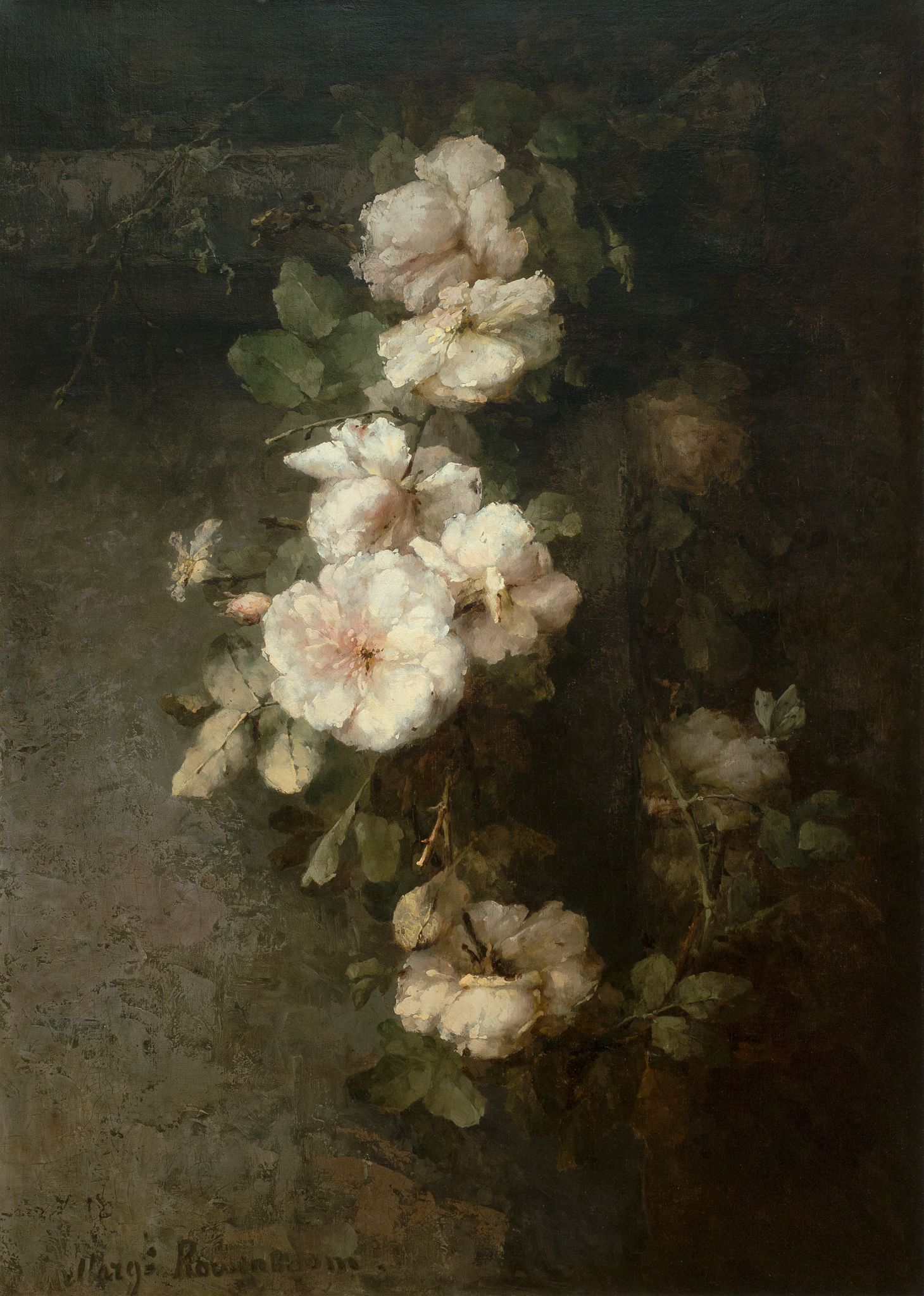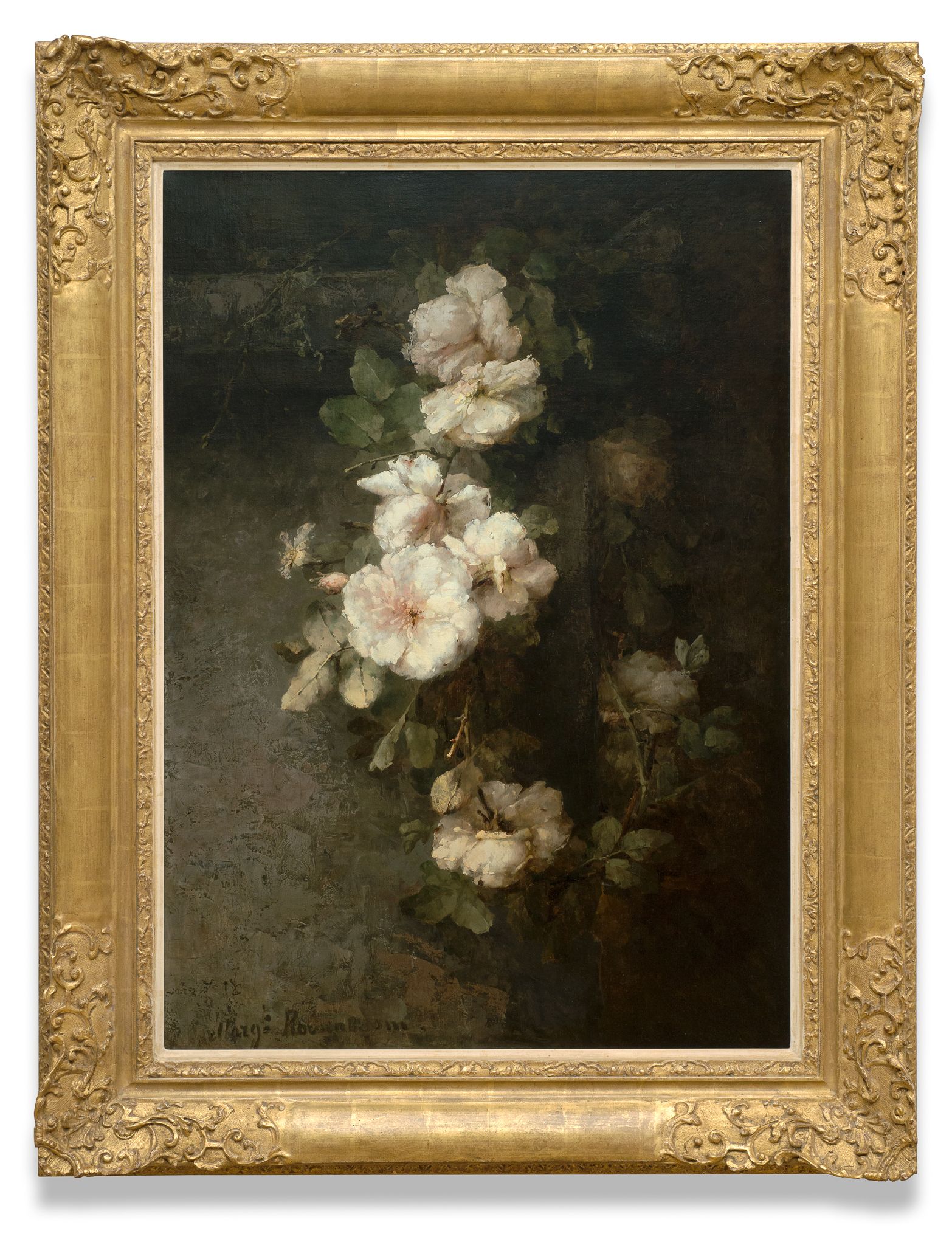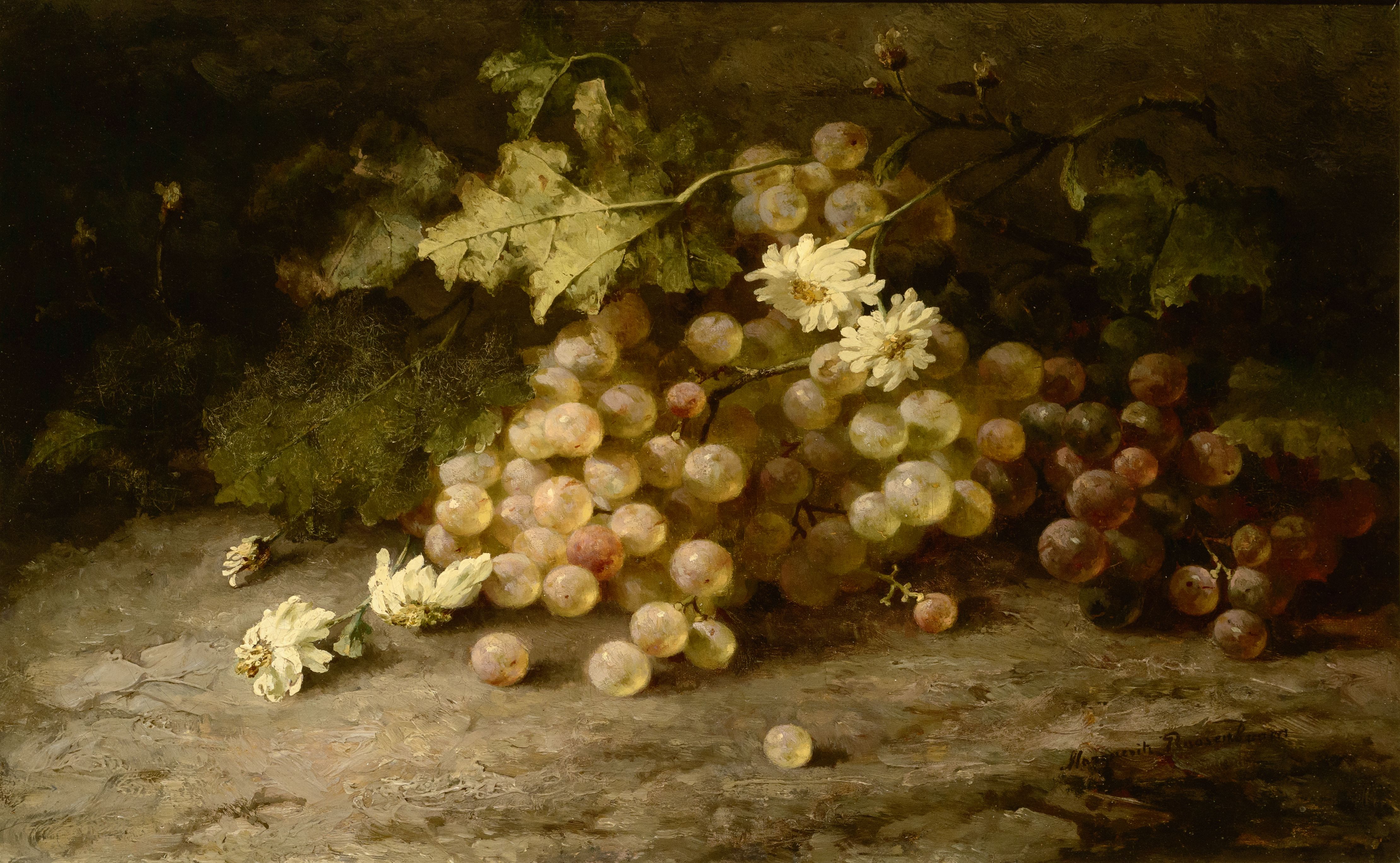M.C.J.W.H. (MARGARETHA) ROOSENBOOM 1843 Den Haag - 1896 Voorburg Branch of Wild Roses
Oil / Canvas: 90,5 x 65 cm
- This artwork can be viewed in our gallery
- Call us for more information: +31 26 361 1876
- World wide shipping available
Details
This painting is a perfect example of the work of the 19th-century painter of floral still lifes Margaretha Roosenboom. A single branch of wild roses is arranged on a greyish background that resembles stone. The flowers form a diamond shape, standing out brightly against the dark surroundings. The painting is carefully composed, yet it still seems natural. This effect is only reinforced by the fact that the roses have seen better days and some leaves have already withered. The work of Margaretha Roosenboom, who grew up in a family of painters, was already popular in her days. Her floral still lifes were well-liked for their quiet, artless and natural look. She exhibited both at home and abroad.
Width: 65 cm
Over M.C.J.W.H. (MARGARETHA) ROOSENBOOM
As was the custom at the time, Margaret Roosenboom was not admitted to the Academy. She received her first painting education from her father: landscape painter Nicolaas Roosenboom in Brussels. In 1867, she returned to The Hague to learn watercolor painting with her grandfather Andreas Schelfhout. She married the painter Johannes Gijsbertus Vogel at the age of 49. Early on, she specialized in flower and fruit still lifes. Her style of painting was accurate and later early impressionistic, in all cases very talented. Margaret Roosenboom's still lifes were innovative in her time. She broke with the time-honored, static traditions in this genre and introduced a more lively way of composition. She usually chose one kind of flowers and depicted them naturally with a loose brushstroke. Colors were carefully chosen: light tones against a dark background. She was a member of Pulchri and exhibited internationally. Her work won many awards. She died at the age of 53 due to an accident.


